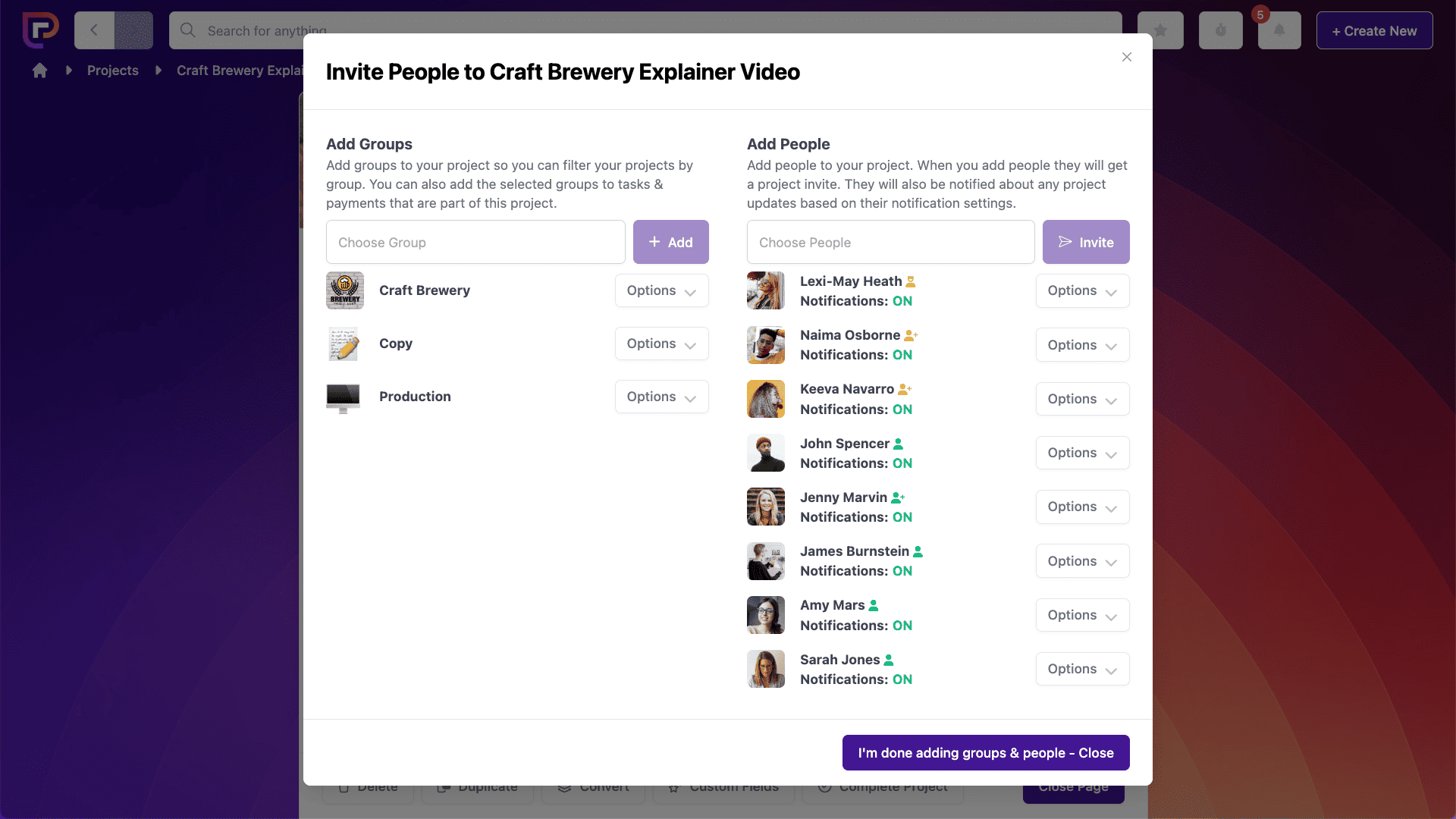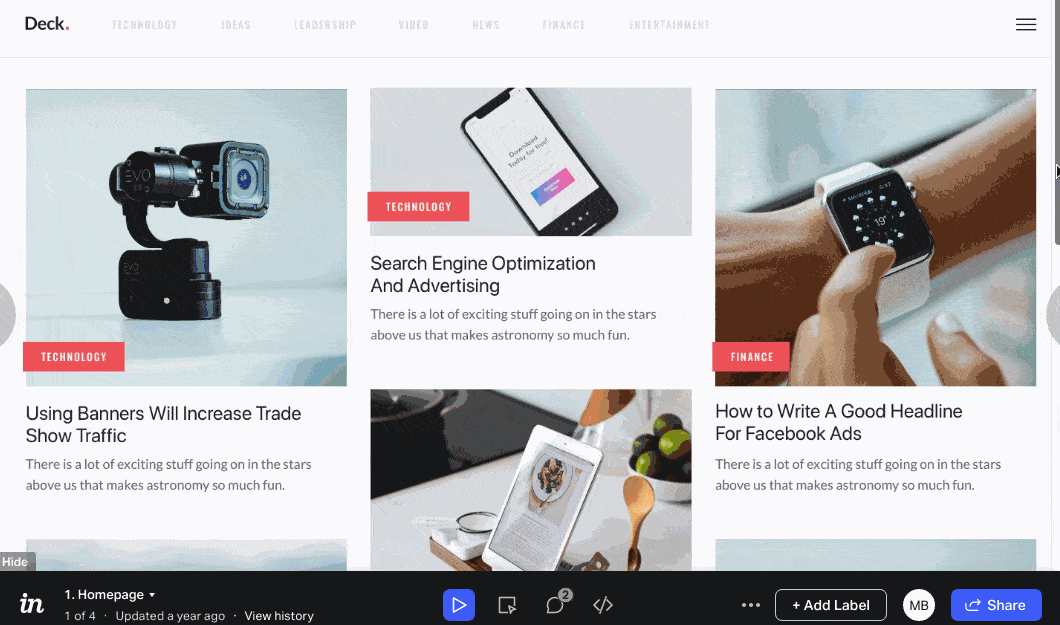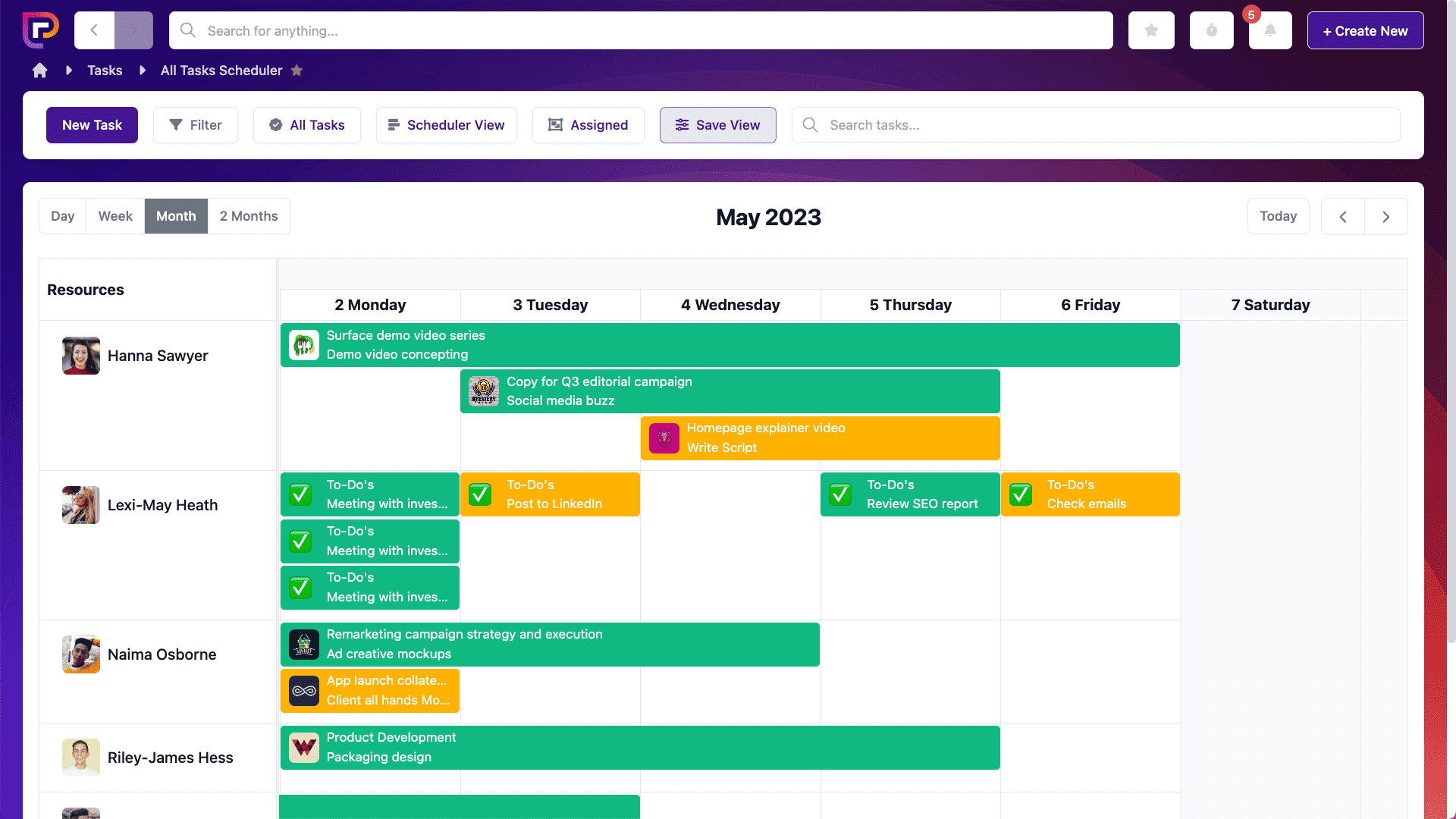Last updated on 23rd November 2023
In the recent Disney documentary, Into the Unknown: Making Frozen 2 viewers got a chance to see just how much work really goes into these feature-length animations.
The team behind the movie was 800 people strong. According to IMDB, there were 107 people in the music department alone.
With so many people involved, and so much pressure to live up to the success of the first movie, collaboration was paramount for the team behind Frozen 2.
In fact, collaboration is key for getting any project off the ground and moving in the right direction – from rocket launches, to movies, and even this article!
If you’re looking to boost team collaboration skills in your business, here are 12 ways to get started…
Why is team collaboration so important?
First, let’s take a look at why team collaboration is so important. When teams collaborate together successfully, wonderful things can happen.
For starters, it means teams can share knowledge, learn from one another, and improve. This often leads to a boost in morale, and can even snowball into increased efficiency and productivity.
What’s more, when teams enjoy collaborating with one another, it’s likely to improve the retention rates of your business.
And the longer people stay with your company, the more successful your collaboration will be as everyone gets to know each other better and understands the most efficient ways of working together.
1. Improve communication
The first step towards boosting your team’s collaboration skills is improving communication. There should be solid rules for communication in your team, including what tools should be used and how you want everyone to use them.
According to our Communication Statistics 2023 report, businesses primarily use email for communication between co-workers. However, the same report also found that 63% of people have missed a message or important piece of information that went into a colleague’s inbox while that colleague was away or absent.
With so many intuitive project management tools out there, why restrict yourself to email communication?
Project.co helps keep team communication centralised. Our discussions tab acts as a timeline of all communication on any given project, and each message is dated and time-stamped making it easy to search.

Everyone who is added to the project via the people tab can choose whether to receive email notifications of the messages or not.

According to The 2020 UK Workplace Stress survey, the second most common cause of stress in the workplace (after “office politics”) is “lack of interdepartmental communications”.
When communication is improved, it reduces stress among the team as everyone knows what’s expected of them and how to get in touch with one another.
2. Train your team
If you want your team to work collaboratively then you need to train them with collaboration in mind.
This includes training employees to appreciate others, engage in meaningful conversations, and productively resolve conflicts.
Regular training sessions – especially those that involve roleplaying scenarios – can help to prepare your team for future situations where collaboration and conflict resolution may be required.
Successful collaboration is also strongly connected to good listening practices and negotiating skills. So training around these areas can increase your team’s proficiency when it comes to working well together, too.
3. Use collaboration tools
One of the best ways to boost collaboration is to use tools that can help!
There are tons of great collaboration tools out there to suit any team in any industry – some of them are even free!
Google Meet
Google Meet is a free video conferencing app available to anyone with a Google account. Teams can use this for regular meetings to discuss projects, and it also has screen-sharing functionality so that everyone can collaborate on work together, in real time.
InVision
InVision is a collaboration tool for digital product design. It allows everyone in the team to create and interact with plans and prototypes in real time.

To take a digital product from conception to realisation requires a lot of teamwork, so a tool like InVision can be invaluable for sharing ideas and gathering feedback.
Project.co
We built Project.co with collaboration in mind. You can create an infinite number of projects to manage everything from your social media calendar, to a one-off event, or even the onboarding of new employees.
With our embeds feature, you can share what you’re working on – whether it’s a Google Docs file, an InVision board, or even a video – with the rest of your team and they can give real-time feedback without ever leaving the project:
4. Hire great leaders
If you want your teams to be collaborative, then you need to hire great leaders who will pave the way.
A great leader will listen to everyone, encourage people to do their best work, and celebrate the success of the individual, in addition to the team as a whole.
Steering a project towards completion, in addition to managing the strengths and requirements of everyone on the team, is no easy task.
Especially when you consider that these days employees are not afraid to leave companies if they feel underappreciated by their leaders.
According to the 2020 Engagement & Retention Report by Achievers, 64% of workers surveyed planned to look for a new job in 2020, with 30% citing the reason for this as “feeling undervalued and under-appreciated.”
5. Build a diverse team
Diversity in the workplace is important for a multitude of reasons. But it’s not only important to build a diverse team from a demographics point of view (race, gender, age, and so on), it’s also useful to weave diversity into your team in other ways.
For example, your team should be diverse when it comes to skill sets, expertise, and personalities. Different people can bring different strengths to your project and help the team – as a whole – to see all perspectives.
When building your diverse team, it’s important to allow each individual to lean into their strengths. Everything can come crumbling down if you force people into the wrong positions.
For example, you may hire someone who has amazing attention to detail but hates speaking in front of others – instead of forcing this person into any kind of public speaking (and making them feel uncomfortable), look to a more confident team member to handle presentations and events.
6. Lead by example
If you want your team to be open to collaboration, then you yourself must be open to it and lead by example. This means regularly communicating with your team and taking their ideas on board.
Set aside clear windows of time to communicate with your team, both on a one-to-one basis and as a team. This way, people can share their thoughts with you openly and you can strengthen your team’s trust in you and also each other.
With Project.co, it’s easy to schedule in regular meetings with your team. You can add a task for each team member who will be attending the meeting, including the meeting link in the notes section for easy access.
You can also upload an agenda or any other useful documents via the files tab.
After the meeting, the project can be used to schedule any action points.
You can even create private projects for your one-to-one meetings to ensure you never forget to have your regularly scheduled catch ups.
Check out our free templates to get started:
7. Handle conflicts positively
When you have multiple people and teams working on projects, you’re bound to have some conflicts. Ideas clash. Personalities don’t mix. And communication breakdown can happen as a result – which is absolutely terrible for collaboration!
But, according to a 2020 study by the CIPD, conflicts are very much a part of organisational life, with 26% of employees and 20% of employers agreeing.
The study also found that just over a third of employees had experienced some form of conflict over the past year, either an isolated dispute or an ongoing difficult relationship.
As conflicts are so unavoidable, the idea is not to try to eliminate them from your workplace but to handle them positively when they arise.
You can handle conflicts positively in 3 steps:
Identify
Identify the areas of conflict proactively. This means being on the lookout for changes in the working atmosphere. Not all members of your team will be forthcoming about conflicts, so it’s important to be on alert for changes in body language and tone of voice.
Listen
When you have identified a conflict it is important to listen to both sides of the story impartially. Give everyone time to present their own thoughts and perspective on the matter before you intervene.
Plan
The final step is developing a plan to work through the conflict. Feel free to involve your team in this, too. The more involved your team can be in resolving conflicts, the easier it will be for them to resolve conflicts independently in the future, resulting in better collaboration.
8. Embed collaboration into your culture
Collaboration should be something that you introduce to your employees from the very moment they start working for you.
And even before!
By embedding collaboration into your culture, you can focus on hiring the right type of people – who want to work collaboratively! – and reduce your employee turnover as a result.
According to a recent study by Wrike, an incredible 70% of happier employees report a strong connection with their company mission and vision, while 32% of unhappy employees feel no affinity for their company mission.
Even more shockingly, 17% of people don’t even know what their company’s missions and visions are.
9. Engage your staff
If your employees are unengaged then it’s unlikely that they’re going to want to collaborate with each other, and this can be very detrimental to your company.
According to the Human Capital Institute, disengagement costs the US economy almost $550 billion per year in lost productivity.
And it’s not just productivity that’s impacted. When a team is disengaged, absence rates increase and work performance decreases. You can even lose customers.
Richard Branson is often quoted as saying that happy employees equal happy customers. In a recent interview with Inc., he elaborated on this, saying:
“If the person who works at your company is 100% proud of the job they’re doing, if you give them the tools to do a good job, they’re proud of the brand, if they were looked after, if they’re treated well, then they’re gonna be smiling, they’re gonna be happy and therefore the customer will have a nice experience. If the person who’s working for your company is not given the right tools, is not looked after, is not appreciated, they’re not gonna do things with a smile and therefore the customer will be treated in a way where often they won’t want to come back for more. So, my philosophy has always been, if you can put staff first, your customer second and shareholders third, effectively, in the end, the shareholders do well, the customers do better, and your staff are happy.”
So making sure your employees are engaged is paramount in order to create this positive snowball effect and make sure they’re collaborating together happily.
Here are 3 ways to effectively engage your staff:
Give them the tools for success
If you want your employees to be engaged and collaborate effectively with one another, then you need to provide them with the best tools for the job.
Using a project management tool, like Project.co, can give your team more visibility over their schedules and ensure all communication is kept in one place, so work can be completed on time and to a high standard.
Support their growth
One of the biggest causes of disengagement is lack of career progression. According to our Employee Engagement Survey, for people who are disengaged at work, 60% said it’s because they are unhappy with their progression prospects.
To avoid your team feeling like this, be sure to have regular catch ups where you can discuss progression and support your team’s growth through the implementation of employee training.
Encourage teamwork
If you want your team to improve their collaborative skills and be more engaged in general, then encourage them to work together on tasks more often.
Teamwork is just like anything else, the more practice everyone gets, the better they become at it.
10. Define clear goals
In order for collaboration to be a success, every single team member needs to have clear goals that are communicated to them by their managers.
These goals should not only be on the individual level, but also the overall goals of the team. That way, everyone knows what they are contributing towards and can keep the bigger picture in mind.
Having regular meetings about goals can help your team members to voice any concerns and ensure they are staying on track.
But nobody likes meetings!
By tracking your team’s goals on Project.co, you can reduce the length of your meetings and make sure deadlines are being met.
Our tasks feature makes it easy to see what everyone is working on at a glance:
You can also use the schedule view to easily drag and drop tasks between team members and/or move tasks to different dates:

What’s more, our kanban view gives you an overall view of the project. This is helpful for spotting any bottlenecks and means that, when you do meet to discuss goals, you can easily resolve issues and get your projects back on track:

11. Focus on team-building
It may be an obvious statement, but it’s worth saying all the same: Teams that like each other will work better together.
Team-building activities can help your employees to build a rapport and get along better. You could go down the traditional route of ice-breaking and problem-solving games, or you could take a more relaxed approach and throw a party.
The team-building activities that work best for your business will depend on many factors, such as how new your team is, and the personality types of everyone.
It’s important to remember that team-building isn’t just something you should do at the start of your team’s journey. Even teams that have worked together for 10+ years can benefit from team-building activities every now and then to encourage people to mix with team members that they don’t normally talk to.
Check out our article for some inspiration: 15+ team building activities your team will actually enjoy!
12. Celebrate group success
It may sound simple, but in order to encourage successful collaboration in your company, you must reward successful collaboration!
When a team works together to get a project completed, make an effort to highlight this achievement and celebrate everyone’s participation.
To circle back to the Into the Unknown: Making Frozen 2 documentary, it may surprise you to know that each animator worked on a roughly 3 second section of the movie at a time. Yet, because of their seamless collaboration, the final movie looks as though it was all created by the same hand.
Each animator’s contribution is celebrated not only in the movie’s final credits, but also internally with a private screening for colleagues, friends, and family.
There are many different ways you could celebrate your team’s success, from small gift cards and thank you notes, to group days out and parties.
Final thoughts
Collaboration is a key component for the success of your projects, so don’t underestimate the importance of it.
Project.co can help you boost collaboration in your business by giving your team the tools they need to work together successfully. Click here to find out more.


